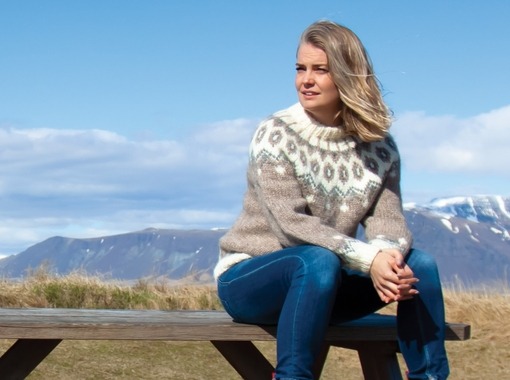The "Icelandic Lopapeysa" is now a product with protected designation of origin, PDO, according to a ruling by The Icelandic Food and Veterinary Authority. The Handknitting Association of Iceland was the applicant, along with other vendors and the application was based on the academic writings of Ásdís Jóelsdóttir, lecturer in textile and design at the School of Education's Faculty of Subject Teacher Education.
Ásdís has studied the origins, history and design of the Icelandic Lopapeysa for years and issued a peer reviewed publication on her research in 2017. Ásdís, who has also been the spokesperson for the applicants, says this is a vital step for all knitters, designers, and producers of the Icelandic Lopapeysa. "It is an all Icelandic design originating in knitting and pattern traditions from the middle of the 20th century, but with roots in traditional Icelandic knitting techniques, and its pattern prototypes date many centuries back," says Ásdís.
The Icelandic Lopapeysa has become increasingly more popular in recent years, not least due to the number of tourists visiting the country. IMAGE/The The Handknitting Association of Iceland

The application of the Handknitting Association of Iceland shows that sales and demand for the Icelandic Lopapeysa has increased considerably, and tourists are very interested in it. To have a protected designation of origin is thus an important step in ensuring the authenticity (traceablilty) of the sweater, to know that it is really made of Icelandic wool and handknitted in Iceland.




